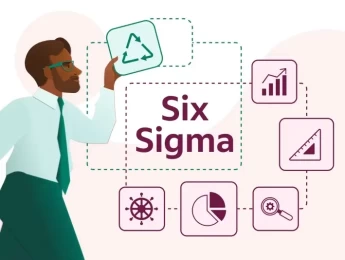- Table of Contents
- What is the Demand Chain within Supply Chain Management?
- What are the Key Components of the Demand Chain?
- What Challenges are Faced in Managing the Demand Chain, and What Strategies are Effective?
- 1. Demand Variability:
- 2. Balancing Inventory Costs and Customer Service Levels:
- 3. Supply Chain Disruptions:
- 4. Customer Demand Volatility:
- 5. Collaboration and Communication:
- What Trends are Emerging in Demand Chain Management for the Future?
- How can Efficiency and Value be Maximized through Demand Chain Integration?
Introduction
In the intricate web of supply chain management, the demand chain stands as a vital thread connecting businesses with their customers. It encompasses a series of strategic processes and activities aimed at understanding, predicting, and fulfilling customer demand effectively. From market research and demand forecasting to inventory management, order fulfillment, and customer service, the demand chain plays a crucial role in ensuring that products or services are available when and where customers need them. This article delves into the nuances of the demand chain within supply chain management, exploring its key components, significance, challenges faced, effective strategies for management, and the emerging trends that are shaping its future landscape.
What is the Demand Chain within Supply Chain Management?
The Demand Chain within Supply Chain Management refers to the series of processes and activities that businesses undertake to understand, anticipate, and fulfill customer demand for their products or services. It encompasses everything from market research and demand forecasting to inventory management, order fulfillment, and customer service. Essentially, the Demand Chain focuses on ensuring that the right products are available in the right quantities, at the right time, and in the right locations to meet customer needs and preferences effectively.
Understanding the Demand Chain is crucial for several reasons:
- Customer Satisfaction: By understanding the demand chain, businesses can accurately predict and meet customer demand, leading to higher levels of customer satisfaction and loyalty.
- Optimized Inventory Management: A clear understanding of the demand chain allows businesses to optimize their inventory levels, reducing excess inventory costs while ensuring products are available when needed.
- Efficient Resource Allocation: Knowledge of the demand chain helps businesses allocate resources efficiently, from production and procurement to distribution and marketing, reducing wastage and improving overall operational efficiency.
- Competitive Advantage: Companies that effectively manage their demand chains can respond quickly to market changes, new trends, and customer preferences, gaining a competitive edge in the market.
- Cost Savings: By aligning production and distribution with actual demand, businesses can reduce costs associated with overproduction, stock outs, expedited shipping, and excess inventory storage.
- Strategic Planning: Understanding the demand chain provides valuable insights for strategic planning, product development, and market expansion efforts, allowing businesses to make informed decisions and capitalize on growth opportunities.
What are the Key Components of the Demand Chain?
The key components of the Demand Chain include:
- Demand Forecasting: entails a meticulous analysis of historical sales data, prevailing market trends, customer behavior patterns, and various influencing factors to precisely predict the future demand for products or services. Demand forecasting helps businesses anticipate customer needs and plan production, procurement, and inventory levels accordingly.
- Inventory Management: Efficient inventory management is crucial in the demand chain to ensure that the right amount of stock is available at the right time and in the right locations. It involves activities such as stock replenishment, inventory tracking, warehouse management, and safety stock management to avoid stock outs and excess inventory costs.
- Order Fulfillment: This component focuses on fulfilling customer orders promptly and accurately. It includes processes such as order processing, picking, packing, shipping, and delivery logistics. Effective order fulfillment ensures that customers receive their orders on time and in good condition, contributing to customer satisfaction and retention.
- Customer Service: Customer service plays a vital role in the demand chain by handling inquiries, resolving issues, providing support, and maintaining positive customer relationships. Good customer service enhances customer experience, fosters loyalty, and encourages repeat purchases.
- Demand Planning: Demand planning involves developing strategies and plans to meet anticipated demand effectively. It includes setting production schedules, procurement strategies, promotional campaigns, pricing strategies, and allocation of resources based on demand forecasts and market insights.
- Data Analytics and Insights: Leveraging data analytics and insights is essential in the demand chain to gather and analyze data related to customer behavior, market trends, sales patterns, and supply chain performance. Data-driven decision-making helps businesses optimize operations, identify opportunities, and mitigate risks in the demand chain.
By effectively managing these key components, businesses can streamline their demand chain processes, improve operational efficiency, enhance customer satisfaction, and achieve sustainable growth.
What Challenges are Faced in Managing the Demand Chain, and What Strategies are Effective?
Managing the demand chain comes with several challenges, but businesses can employ effective strategies to address them:
1. Demand Variability:
- Challenge: Fluctuations in demand due to seasonality, market trends, or unforeseen events can disrupt inventory management and production planning.
- Effective Strategies:
- Implementing demand sensing technologies such as point-of-sale data analytics, social media listening tools, and customer feedback analysis to capture real-time demand signals and adjust forecasts accordingly.
- Collaborating closely with suppliers and partners through demand-driven supply chain practices such as vendor-managed inventory (VMI) and collaborative planning, forecasting, and replenishment (CPFR) to ensure flexible supply chain responses to demand fluctuations.
- Leveraging advanced forecasting techniques like statistical models, predictive analytics, and machine learning algorithms to enhance demand forecasting accuracy and reliability, particularly for volatile demand patterns.
2. Balancing Inventory Costs and Customer Service Levels:
- Challenge: Striking the right balance between maintaining optimal inventory levels to meet customer demand while minimizing inventory holding costs and stockouts.
- Effective Strategies:
- Adopting lean inventory management practices such as just-in-time (JIT) inventory, kanban systems, and demand-driven replenishment to reduce excess inventory and improve inventory turnover rates.
- Implementing demand-driven inventory optimization tools and techniques that consider demand variability, lead times, service levels, and cost constraints to optimize stock levels and safety stock buffers dynamically.
- Utilizing advanced inventory analytics and simulation tools to perform what-if analysis, scenario planning, and inventory optimization modeling to identify optimal inventory policies and trade-offs between costs and service levels.
3. Supply Chain Disruptions:
- Challenge: Unforeseen disruptions such as supplier shortages, transportation delays, geopolitical events, or natural disasters can disrupt the supply chain and impact demand fulfillment.
- Effective Strategies:
- Developing robust risk management plans that identify potential supply chain risks, assess their impact, and implement risk mitigation strategies such as dual sourcing, inventory buffers, alternate logistics routes, and contingency plans.
- Investing in supply chain visibility technologies such as real-time tracking, IoT sensors, blockchain-based traceability, and supply chain control towers to monitor and manage supply chain operations, anticipate disruptions, and enable rapid response and recovery.
- Collaborating closely with key suppliers, logistics partners, and service providers through transparent communication, contractual agreements, and risk-sharing mechanisms to build resilience and agility in the supply chain.
4. Customer Demand Volatility:
- Challenge: Rapid changes in customer preferences, buying behavior, market dynamics, or competitive actions can lead to unpredictable demand patterns and variability.
- Effective Strategies:
- Conducting frequent market research, customer segmentation analysis, and demand sensing activities to understand evolving customer needs, preferences, and trends, and adapt product offerings, pricing strategies, and promotions accordingly.
- Offering flexible product options, customization, or personalization capabilities to meet diverse customer demands and enhance customer experience, loyalty, and satisfaction.
- Leveraging advanced data analytics, artificial intelligence (AI), and machine learning (ML) algorithms to analyze demand data, identify demand patterns, forecast demand accurately, and optimize demand planning and inventory management strategies in response to demand volatility.
5. Collaboration and Communication:
- Challenge: Siloed operations, lack of coordination, and poor communication among departments, teams, and stakeholders can hinder effective demand chain management.
- Effective Strategies:
- Implementing integrated demand planning, supply chain management, and enterprise resource planning (ERP) systems that enable seamless data sharing, collaboration, and visibility across functions, processes, and organizational units.
- Establishing cross-functional teams, joint business planning sessions, and collaborative decision-making forums to align sales, marketing, operations, procurement, and logistics strategies, priorities, and actions.
- Fostering a culture of collaboration, transparency, continuous improvement, and knowledge sharing through training programs, performance incentives, and cross-functional projects that promote teamwork, accountability, and innovation in demand chain management.
By implementing these effective strategies and leveraging advanced technologies, analytics, and collaborative practices, businesses can overcome the challenges associated with managing the demand chain, enhance operational efficiency, agility, and resilience, improve customer satisfaction and loyalty, and achieve sustainable competitive advantage in today's dynamic and competitive market environment.
What Trends are Emerging in Demand Chain Management for the Future?
Several trends are shaping the future of demand chain management:
- Advanced Data Analytics and AI: The use of advanced data analytics, machine learning, and artificial intelligence is becoming increasingly prevalent in demand chain management. These technologies enable businesses to analyze vast amounts of data, identify patterns, trends, and insights, improve demand forecasting accuracy, optimize inventory levels, and automate decision-making processes for better demand chain performance.
- Demand Sensing and Real-Time Monitoring: Demand sensing technologies, such as IoT sensors, real-time data feeds, and predictive analytics, are gaining traction. These technologies enable businesses to capture real-time demand signals, monitor market changes, customer preferences, and supply chain dynamics, and respond quickly to demand fluctuations, disruptions, and opportunities in the market.
- Predictive and Prescriptive Analytics: The adoption of predictive and prescriptive analytics tools is on the rise. These tools help businesses anticipate future demand trends, simulate what-if scenarios, optimize demand planning, inventory management, and supply chain operations, and make proactive decisions to improve performance, reduce risks, and enhance customer satisfaction.
- Supply Chain Visibility and Collaboration: Enhanced supply chain visibility and collaboration are key trends in demand chain management. Businesses are leveraging technologies like blockchain, cloud-based platforms, and supply chain control towers to gain end-to-end visibility into supply chain operations, track inventory, monitor supplier performance, collaborate with partners, and improve coordination and communication across the supply chain ecosystem.
- Demand-Driven Supply Chains: Demand-driven supply chain strategies are gaining prominence as businesses shift from traditional forecast-driven approaches to more agile and responsive demand-driven models. These strategies focus on sensing customer demand in real time, aligning supply chain processes with actual demand signals, enabling flexible production and distribution, and enhancing customer service levels while minimizing inventory costs and stockouts.
- E-commerce and Omni-channel Retailing: The growth of e-commerce and omni-channel retailing is influencing demand chain management strategies. Businesses are adapting their supply chains to support multiple sales channels, seamless order fulfillment, last-mile delivery options, and personalized customer experiences, driving the need for efficient inventory management, order processing, and logistics capabilities.
- Sustainability and Ethical Considerations: Sustainability and ethical considerations are increasingly shaping demand chain management practices. Businesses are focusing on sustainable sourcing, green logistics, circular economy initiatives, ethical supply chain practices, and transparent reporting to meet regulatory requirements and reduce environmental impact.
Overall, these trends reflect the growing complexity, dynamism, and digitalization of demand chain management, highlighting the importance of leveraging technology, data-driven insights, collaboration, and sustainability practices to drive innovation, agility, and competitiveness in the future demand chain landscape.
How can Efficiency and Value be Maximized through Demand Chain Integration?
Efficiency and value can be maximized through demand chain integration by implementing several key strategies:
- Streamlined Processes: Integrating demand chain processes such as demand forecasting, inventory management, order fulfillment, and customer service into a cohesive and streamlined workflow can eliminate redundancies, reduce lead times, minimize manual errors, and improve overall operational efficiency.
- Data Integration and Visibility: Integrating data from various sources such as sales, marketing, operations, supply chain, and customer interactions into a centralized data platform enables real-time data access, analytics, and insights. This data integration enhances visibility across the demand chain, facilitates informed decision-making, and enables proactive responses to demand fluctuations, market trends, and customer needs.
- Collaborative Planning and Execution: Demand chain integration fosters collaboration and communication among cross-functional teams, suppliers, partners, and stakeholders. Collaborative planning sessions, joint forecasting, and shared goals ensure alignment of strategies, priorities, and actions, leading to faster decision-making, improved coordination, and enhanced agility in responding to market changes and customer demands.
- Demand-Driven Supply Chain: Integrating demand sensing technologies, predictive analytics, and machine learning algorithms enables businesses to transition to demand-driven supply chain models. By aligning supply chain processes with real-time demand signals and customer preferences, businesses can reduce inventory holding costs, minimize stockouts, optimize production schedules, and enhance customer service levels, resulting in higher efficiency and value.
- Automation and Digitization: Leveraging automation tools, digital technologies, and cloud-based platforms in demand chain integration can automate routine tasks, streamline workflows, improve data accuracy, and enhance scalability. Automated order processing, inventory replenishment, logistics optimization, and customer service interactions increase operational efficiency, reduce manual errors, and free up resources for more strategic activities.
- Performance Metrics and Continuous Improvement: Implementing key performance indicators(KPIs), metrics, and analytics dashboards in demand chain integration enables performance monitoring, benchmarking, and continuous improvement initiatives. By tracking metrics such as demand forecast accuracy, inventory turnover, order cycle time, customer satisfaction scores, and supply chain costs, businesses can identify areas for optimization, implement corrective actions, and drive value creation across the demand chain.
- Customer-Centric Focus: Demand chain integration should be driven by a customer-centric approach, where the primary goal is to meet and exceed customer expectations. By understanding customer needs, preferences, and feedback through integrated data analytics and customer insights, businesses can tailor products, services, and experiences to create value, build loyalty, and drive repeat business, ultimately maximizing efficiency and value in the demand chain.
Table 1:Strategies for Maximizing Efficiency and Value through Demand Chain Integration
Strategies | Description |
Streamlined Processes | Integrating demand chain processes (forecasting, inventory management, order fulfillment, customer service) for efficiency and reduction of errors. |
Data Integration | Centralizing data from sales, marketing, operations, etc., for real-time access, analytics, and better decision-making. |
Collaborative Planning | Encouraging cross-functional collaboration, joint forecasting, and shared goals for alignment and agility in responding to market changes. |
Demand-Driven Supply Chain | Using demand sensing tech, analytics, and machine learning for a responsive supply chain, minimizing costs and optimizing production. |
Automation and Digitization | Leveraging automation, digital tools, and cloud platforms for task automation, data accuracy, and scalability. |
Performance Metrics | Implementing KPIs and analytics for continuous improvement and value creation, monitoring metrics like demand forecast accuracy and customer satisfaction. |
Customer-Centric Focus | Tailoring products/services based on customer insights for enhanced value, loyalty, and repeat business. |
Overall, demand chain integration is about aligning people, processes, data, and technologies to create a seamless and responsive supply chain that delivers value to customers, stakeholders, and the business as a whole. By adopting a holistic approach to integration and leveraging digital capabilities, collaboration, and continuous improvement, businesses can achieve higher levels of efficiency, agility, innovation, and competitiveness in today's dynamic market landscape.
Conclusion
In conclusion, the demand chain within supply chain management is not just a concept but a strategic imperative for businesses seeking sustainable growth and competitive advantage. By mastering the intricacies of the demand chain—such as demand forecasting, inventory optimization, order fulfillment efficiency, and customer-centric approaches—organizations can enhance customer satisfaction, streamline operations, and drive profitability. While challenges like demand variability, supply chain disruptions, and collaboration issues persist, proactive strategies, data-driven insights, and technology adoption can mitigate these challenges effectively. Furthermore, as the landscape evolves, embracing emerging trends like advanced analytics, demand sensing technologies, and sustainable practices will be key to staying ahead in the dynamic market environment. Ultimately, a well-integrated and optimized demand chain is the cornerstone of success in meeting customer expectations, optimizing resources, and achieving sustainable business growth.

























